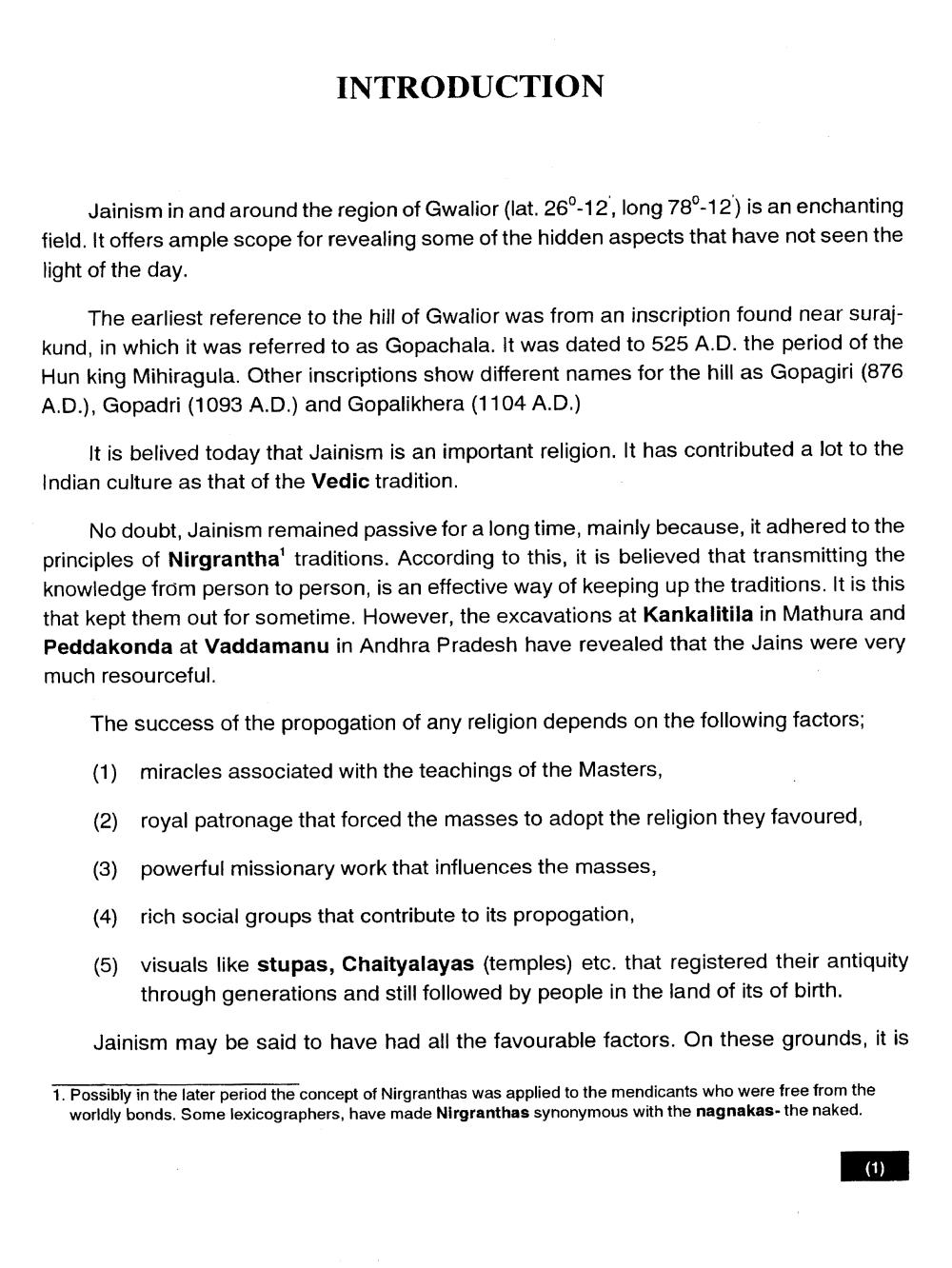________________
INTRODUCTION
Jainism in and around the region of Gwalior (lat. 260-12, long 780-12) is an enchanting field. It offers ample scope for revealing some of the hidden aspects that have not seen the light of the day.
The earliest reference to the hill of Gwalior was from an inscription found near surajkund, in which it was referred to as Gopachala. It was dated to 525 A.D. the period of the Hun king Mihiragula. Other inscriptions show different names for the hill as Gopagiri (876 A.D.), Gopadri (1093 A.D.) and Gopalikhera (1104 A.D.)
It is belived today that Jainism is an important religion. It has contributed a lot to the Indian culture as that of the Vedic tradition.
No doubt, Jainism remained passive for a long time, mainly because, it adhered to the principles of Nirgrantha' traditions. According to this, it is believed that transmitting the knowledge from person to person, is an effective way of keeping up the traditions. It is this that kept them out for sometime. However, the excavations at Kankalitila in Mathura and Peddakonda at Vaddamanu in Andhra Pradesh have revealed that the Jains were very much resourceful.
The success of the propogation of any religion depends on the following factors;
(1) miracles associated with the teachings of the Masters,
(2) royal patronage that forced the masses to adopt the religion they favoured,
(3) powerful missionary work that influences the masses,
(4)
rich social groups that contribute to its propogation,
(5) visuals like stupas, Chaityalayas (temples) etc. that registered their antiquity
through generations and still followed by people in the land of its of birth.
Jainism may be said to have had all the favourable factors. On these grounds, it is
1. Possibly in the later period the concept of Nirgranthas was applied to the mendicants who were free from the worldly bonds. Some lexicographers, have made Nirgranthas synonymous with the nagnakas- the naked.
(1)




